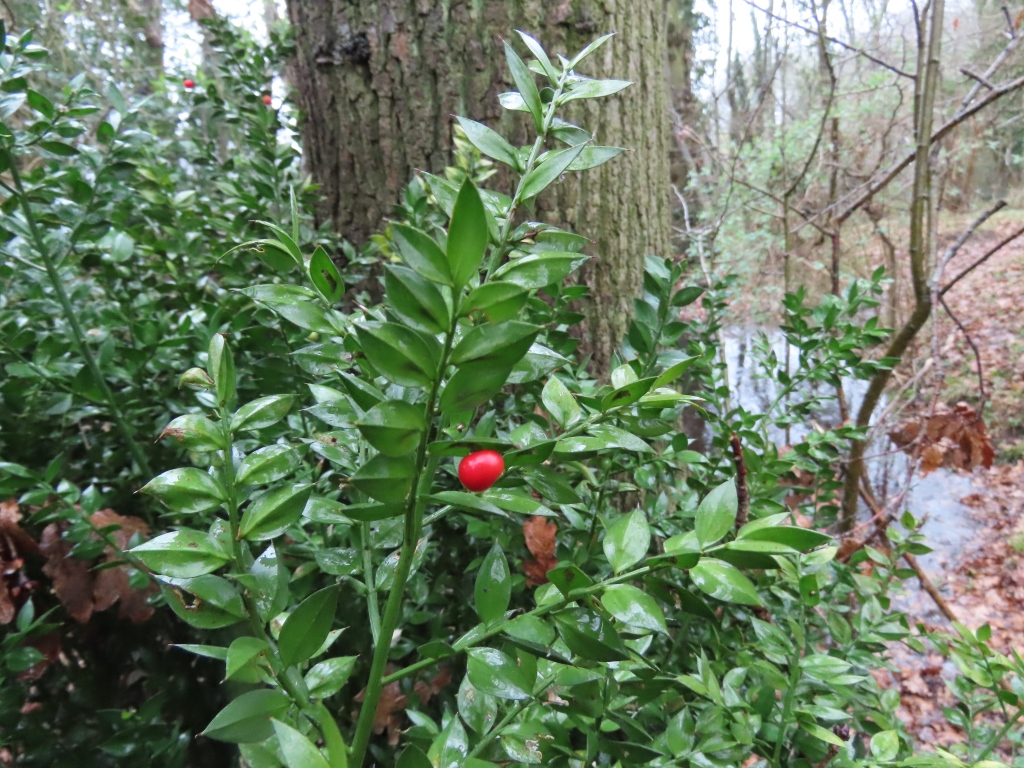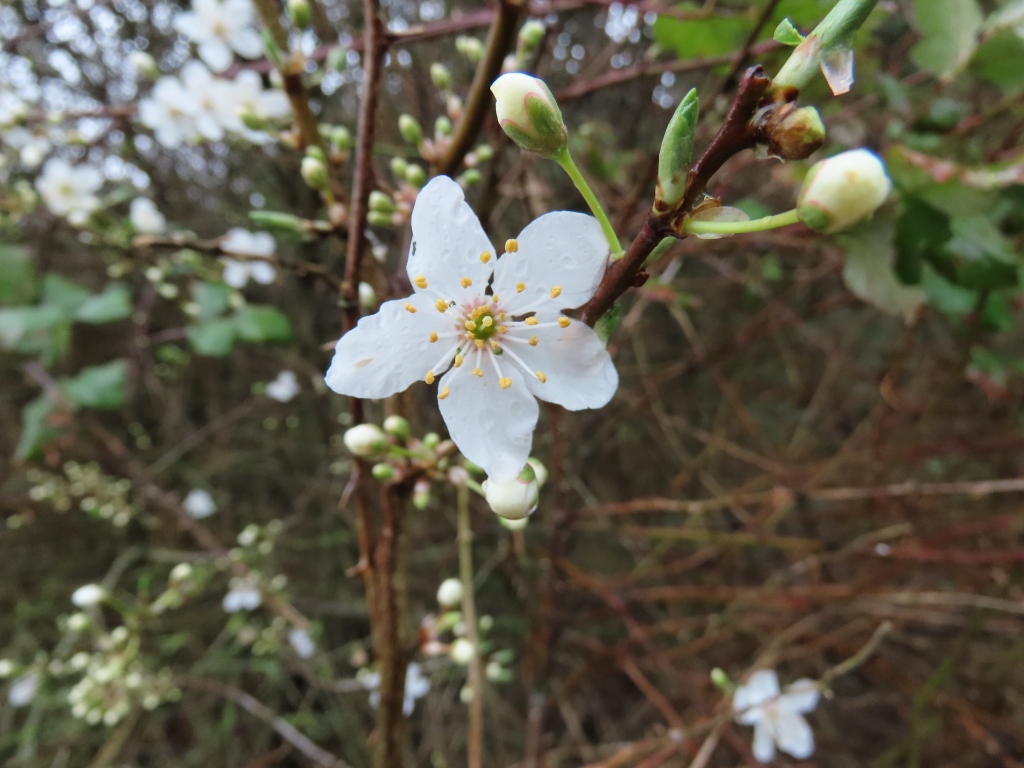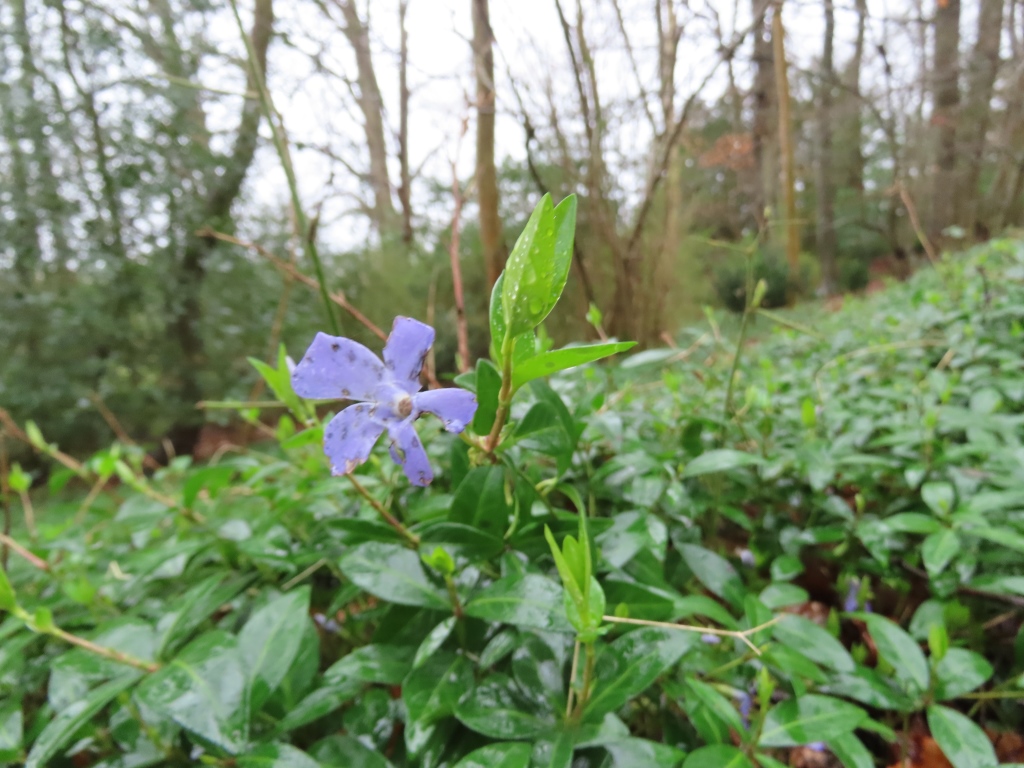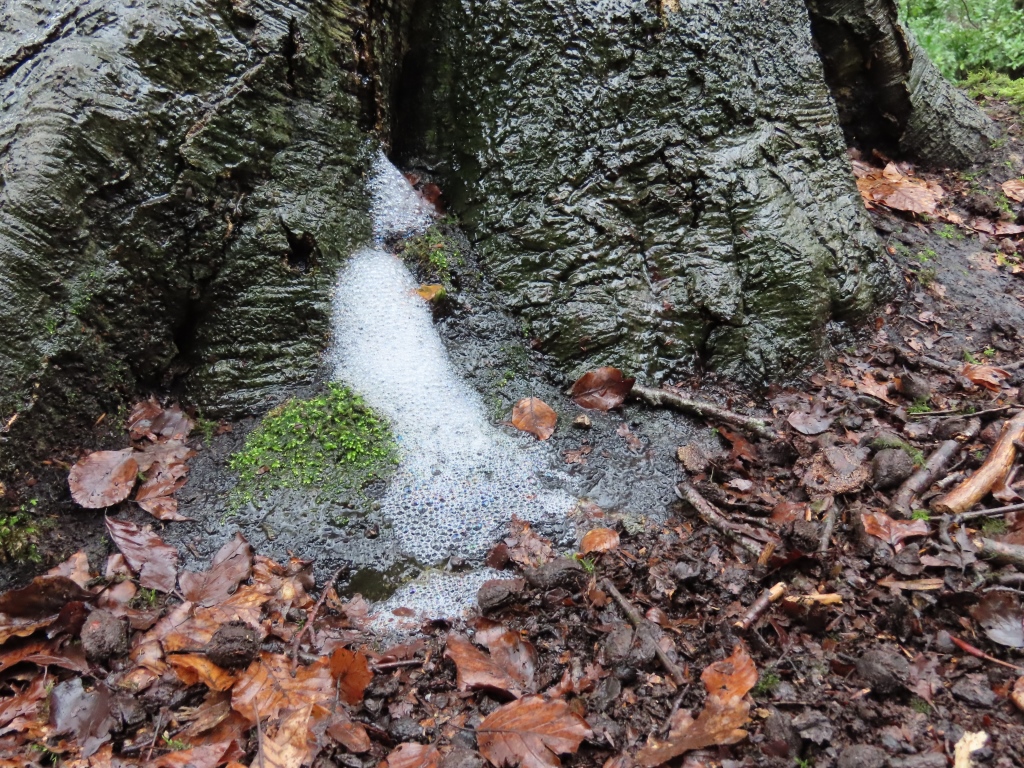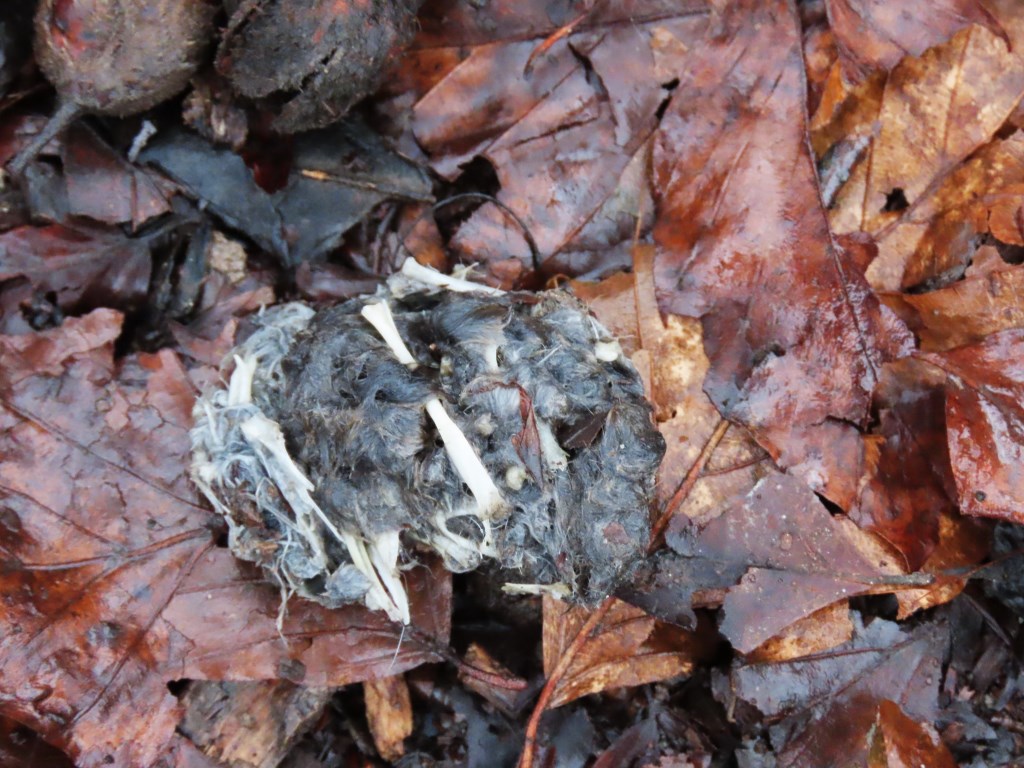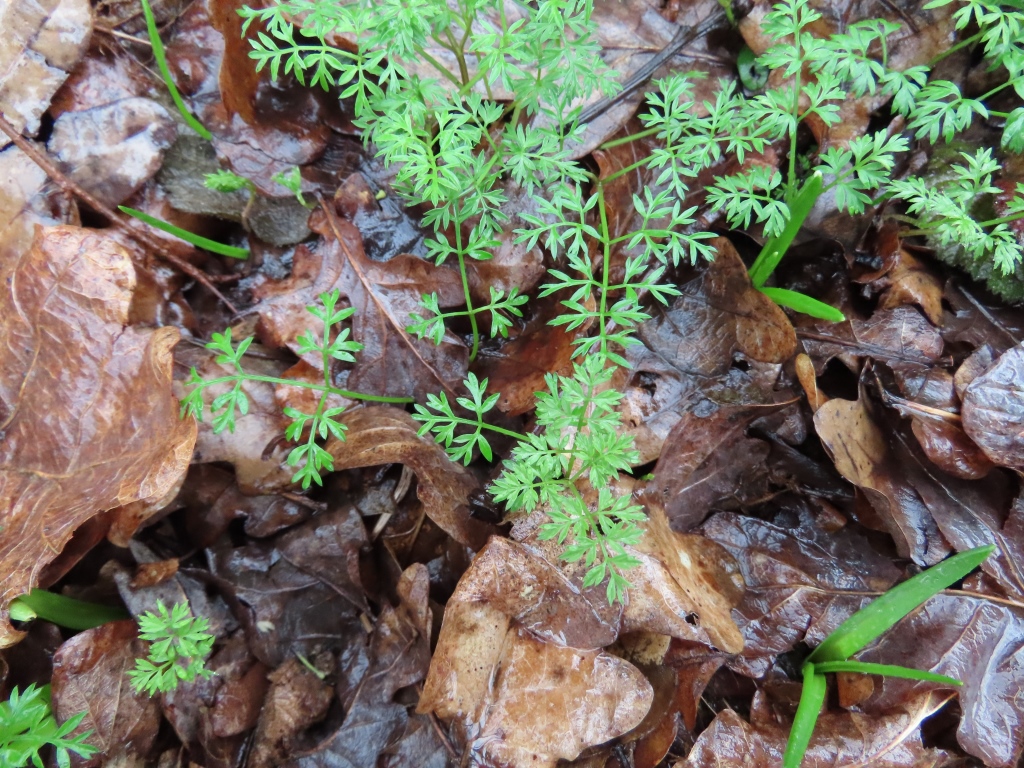Rob Stallard led a circular walk, starting from the Cornwell Centre on the western boundary of Tilehurst, on the morning of Wednesday 21 February. The original plan had been to look at the veteran trees of Savernake Forest, near Marlborough, but a forecast of heavy rain and gale force wind gusts had convinced Rob that it would be better to have a local walk instead. This was the third year in a row that the Savernake walk had had to be cancelled due to unfavourable weather conditions. The heavy rain did not materialise, but it was very windy and conditions underfoot were exceedingly muddy, following earlier rain events. The walk started out through Cornwell Copse. What was usually a small stream flowed with greatly increased volume in a deep channel at the lower end of the wood. Soft Shield-fern and Hard-fern were growing on the stream banks. After crossing Sulham Hill, the walk continued through a small copse on the south-west side of the road. Bluebell leaves were showing well. Distinctive fallen leaves helped in the identification of several Wild Service-trees and there were a number of clumps of Butcher’s-broom, bearing both bright red berries and small white flowers on the upper side of what looked like leaves but were actually modified stems. Leaving the copse, the path continued along a fence which separated a horse-grazed field from a very wet ploughed field. A big flock of Redwings plus a few Fieldfares and some Starlings flew up from the grassy pasture and into the trees on the edge of nearby Clay Copse. The route led across the bottom of the ploughed field, then continued southwards along a narrow path which dropped steeply down through the adjoining woods. Rob said that the woods appear to have been clear-felled around the time of World War II, then most had been planted with conifers, leaving just a strip of broad-leaved woodland at the bottom edge of the woods. Dog’s Mercury plants beside the path were well grown but not yet in flower, a few Lesser Celandine plants were flowering and the leaves of Greater Stitchwort were identified. The route dropped down almost to the bottom of woods, then turned westwards along a narrow path through the strip of broad-leaved woodland. Clumps of Hairy Wood-rush were in flower on a bank above the path and a few Primrose flowers were seen. An even narrower path led out into the field below the woods. The next track ran along the edge of the woodland. The underlying geology was now Chalk and the ground underfoot was no longer muddy. A number of Cherry Plum bushes and a single Blackthorn bush in the woodland edge were white with blossom. The Cherry Plum had reflexed sepals, larger flowers and no thorns, while the Blackthorn had clumps of smaller flowers and thorns. The woodland edge turned north-westwards and Rob commented that the sheltered field margin here is good for Chalk flowers in summer. The path led back into the bottom of the woods, where the trees were now mostly Beeches. A tree at the side of the path had a patch of foam near its base, thought to be caused by a chemical reaction between rising sap and rainwater running down the trunk. In the strip of woodland between the path and the field below were a single bush of Box, a big old Yew and many clumps of Butcher’s-broom, which had probably been planted. There was a dense ground cover of Lesser Periwinkle. The path crossed a temporary stream which was flowing down from woods above, thanks to the excessive rainfall of recent weeks. A deep trackway led towards the road. Rob reported that a Bird’s-nest Orchid had been found on its bank in early summer one year. After re-crossing Sulham Hill, the walk continued along the bottom strip of woodand. Leaves of Sanicle were identified and another Beech tree with foam at its base was found. A bird pellet containing small bones, thought to have been dropped by an owl, was spotted down on the ground. The route then followed a path up through the conifer woods, where a Goldcrest was singing high in the trees, and out onto the ploughed fields. Skylarks were rising up from the ground, singing in flight and then dropping back down again. A flock of Goldfinches were calling from the hedge line. Field Pansy was found in flower and the leaves of Burdock and Parsley-piert were seen. These fields are part of the Sulham Woodmeadows project, which aims to return three large fields to nature. They have been sown with a mixture of grasses and wild flowers and will be grazed by cattle. Over 2 km of hedges have been planted, with ditches being dug next to some of the hedge lines. After crossing Long Lane, the next path crossed Barefoots Copse, where the feathery leaves of Pignut were seen and Moschatel was found next to the path. The final section of the walk crossed Cornwell Copse and led back to the cars. Most of the group then went to the Greyhound at Tidmarsh for lunch.
